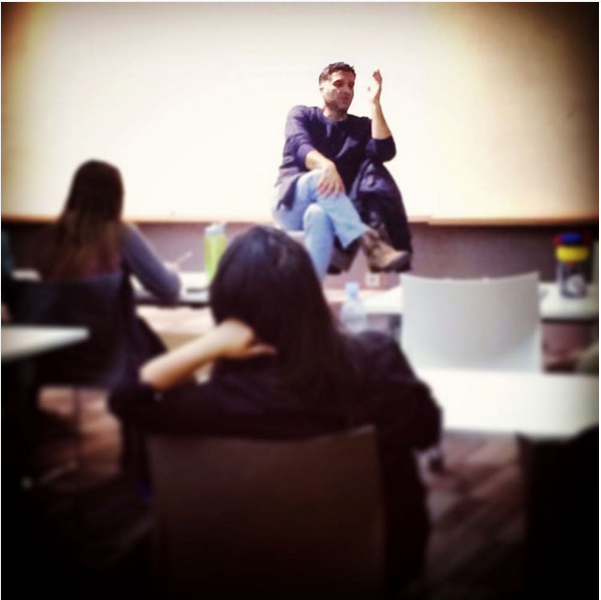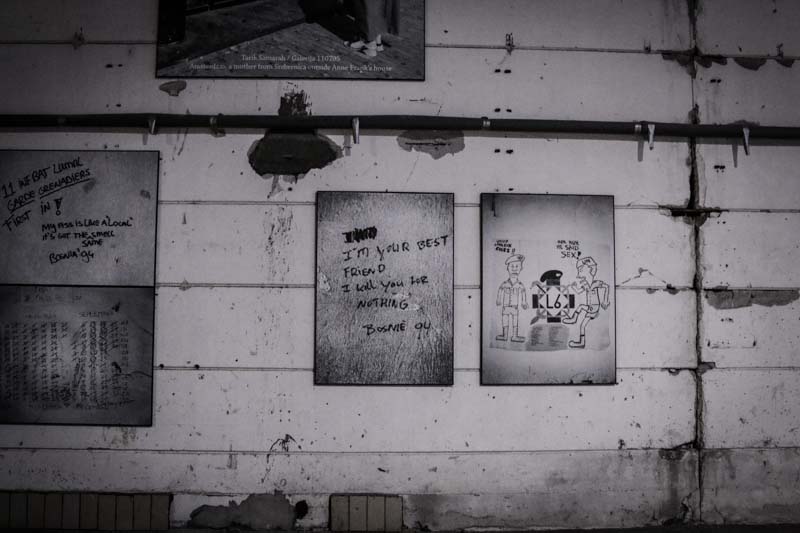As I write this, I'm waiting for our students to return from their weXplore, a five-day excursion that takes students beyond their host city for immersive cultural experiences. For the past two months, we as a school have called Maun, Botswana, our home. It's a small town on the edge of the Okavango Delta and, for many travelers, a doorway into Africa. But Maun is only one perspective, and it...
Read MoreIn her celebrated TED Talk, Chimamanda Ngozi Adichie warns of The Danger of a Single Story. “To show a people as one thing, over and over again, that is a single story,” Adichie states. The truth is, I only knew one single story of Bosnia & Herzegovina (BiH) before I arrived, and that same narrative was reinforced through every murmur, stare, and worried conversation I encountered before my visit.
“But… Is it safe?” People would ask, over and over, upon learning of my three-month stay in Sarajevo. And I admit the fears of others, to some small extent, manifested into a quiet hesitation of my own.
My single story of BiH was initially written by the media in the early 90s, when headlines screamed “Sarajevo under Siege,” “UN Mission Grown to a Halt,” and “Death by Thousands.” These words were the script of my story, and replaced an epicenter of thriving culture, dense with tradition and faith, with CNN B-roll of grenades falling and mortar fire ringing.
My story eventually evolved, but only through the ignorant fears of others. In the Western world, there is often a confused muddling between jihadis and devout followers of Islam, one of the world’s great faiths. While Islamophobia may be too strong a label for those unaware of the force of their own single story, my visiting Sarajevo, a city comprised of a roughly 90% Muslim population (a proper census was conducted in 2013, but the results are yet to be published*), seemed terrifying to most of the Westerners I shared my travel plans with. It is clear that fear dictates the recitation of the stories we continue to tell ourselves, and continue to tell to others. Adichie says, “The problem with stereotypes isn’t that they are not true, but that they are incomplete.” Today, our Western world is riddled with stereotypes and incomplete stories.
Walking through Sarajevo in 2016, I realize just how incomplete my narrative of BiH once was. I’m not reminded of war as much as I’m reminded of kindness, in the face and warm welcome of each local I encounter.
Sarajevans live to socialize. Whether it be with family or friends, every free moment is spent bantering in cafes, sipping coffee, nibbling pastries, or puffing on large hookahs under a cloud of smoke. In Sarajevo, cobblestone alleys covet pomegranate sellers and tiered red rooftops stretch across windows advertising ćevapi, all while men gather in the center square for a game of life-size chess. And within the first thirty seconds of any interaction, a local will excitedly ask in broken English, “Where are you from?” sounding more like a small shout than a question.
The crossroads of three cultures
Outsiders may find it difficult to imagine that Bosnians, Croatians, and Serbians live together in relative peace when only twenty years ago conflict ravaged the streets. Progressive youth mix in old theater houses while pious devotees worship their respective creators. An Orthodox church, synagogue, mosque, and cathedral all share the same stretch of sunlight in old town, where altars, hexagrams, minarets, and pulpits meet.
While the TGS community was studying religious diversity in BiH, Rabbi Ellie Taubr shared a story of Sarajevo with us that often goes unheard. Through falsifying identities, Taubr told of Muslims who helped Jews escape during World War II, and of Jews who later on helped Muslims escape during the Bosnian War, noting that “[Bosnia] is the only place in the world where Jews left as Muslims, and Muslims left as Jews.” Taubr’s story of war was actually a story of kindness. Where neighbors, despite conflicting belief systems, had enough faith to help one another in the face of atrocity.
Life is the best writer
While teaching literature in BiH, I fought my own single story by reading narratives from all perspectives. My Serbian friends encouraged me to teach The Bridge on the Drina, while my Bosnian friends were hesitant as they feared students would walk away with an anti-Ottoman perspective. My Bosnian friends encouraged me to teach S.: A Novel about the Balkans, while my Serbian friends were hesitant as they feared students would walk away with an anti-Serbian perspective. My Croatian friends encouraged me to teach Zlata’s Diary, while others feared it too simplistic to investigate a BiH perspective.
They were all right. Choosing one text to represent the range of perspectives woven in the fabric of BiH would fail to illuminate its layered, rich history. Choosing one text to represent any one place is dangerous, as it turns an entire nation’s pulse, legend, and legacy into a single story. Danis Tanovic, Oscar winning filmmaker of No Man’s Land, spoke to our students about war, humor, and storytelling. When asked for recommendations on how, as outsiders, we can best understand BiH, he said, “Read all the books you can. Read all of them. Every one.”
Tanovic’s lecture was less about war and more about recognizing the humanity of all sides of conflict. Despite having fought as a soldier himself, he shares multiple points of view while reconstructing BiH history through cinematic storytelling. “We are not west, we are not east,” Tanovic states. “There are no rules here. War or no war, the reality is, we all live in degrees of pain. Life is the best writer.” Despite the personal degrees of pain Tanovic endured while witnessing death on a daily basis, he understands that war reality “is not the only reality.”
Local reconciliation activist Kristina Seslija invited our students into her home to share her own personal reality of war. During her time living without food, electricity, soap, and water, what she remembers most is the vivid sense of community she felt during wartime. “Neighbors would come together and help, and even helped deliver my baby during war,” she recalled. “People need to know all sides… Not just two, but five sides of any story.” Kristina now works on peacebuilding between Bosnians, Serbians and Croatians, replacing her own understanding of war with an understanding of peace.
Rewriting the narrative
Twenty years later, Sarajevo is still recovering from its wounds. While walking through the city, one can’t ignore the scars from bullets etched into the sides of buildings, or the mass public grave sights, or the monuments representing different horrors. An average of 329 grenades fell on Sarajevo each day, and 11,541 people* died over the 43 months of war. Bodies of victims are still being unearthed two decades later. This is a reality -a fierce reality- still felt today. Peacebuilding is difficult work and resentments lie deep.
Tarik Samarah, documentary photographer of the notable Srebrenica – Genocide at the Heart of Europe Exhibition recollects that “Animals couldn’t do to animals what humans did to humans” during the war. While depicting stories of loss, Samarah recognizes that his life’s work is not about portraying a good side or a bad side, or even about portraying war itself. “Everything I’ve done and I’m doing comes from a place of love,” he states.
War is one story of Bosnia, but it is not the only story. This single story devalues the goodness of humanity; it devalues those who were lost, those who survived, those who are pulsing on — those pursuing a stronger future for BiH. Irfan Gazdic, Tunnel of Hope tour guide, claims, “We don’t want to have to explain ourselves to people, we just want to meet people. All (that) people know of us is war.”
Sarajevans are still fighting their own war — a war of kindness in the face of such single stories. And those stereotypes, as Adichie agrees, “Rob people of dignity and emphasize how we are different rather than how we are similar.”
We are all conditioned by our own single stories, and these cyclical, reinforced narratives can easily unfold as a personal reality . Through human connection, we have a chance to rewrite our own narratives and to fight such dangerous fears, judgements, and assumptions. Each day we choose — we choose the stories we want to embrace, the stories we want to share, and the stories we want to live.
Sources
Toe, Rodolfo “Disputes delay publication of Bosnia census.” Balkan Insight, November 5, 2015
Cooper, Rob. “Bosnia remembers: Empty chairs laid out in Sarajevo in memory of 11,541 killed 20 years after bloody conflict began.” Daily Mail, April 6, 2012.




